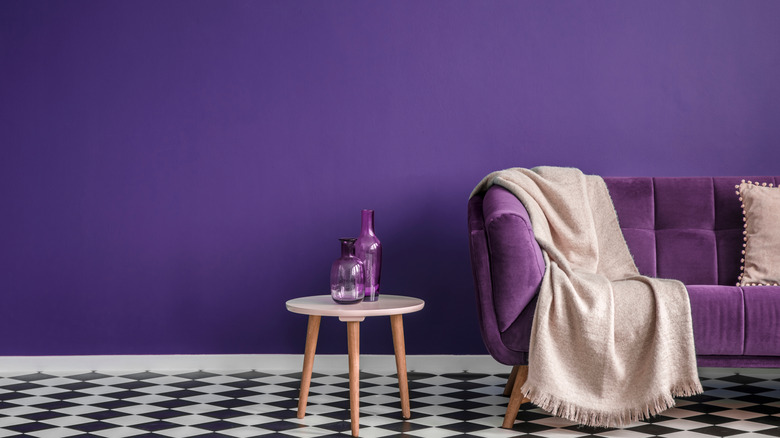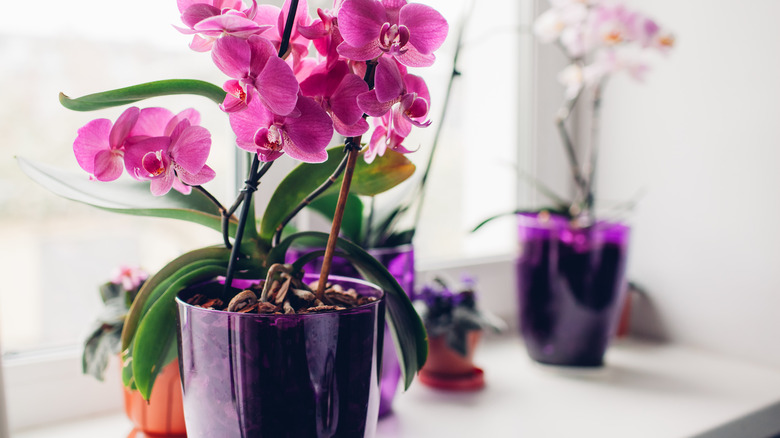Why Painting Your Bedroom Purple May Be A Huge Mistake
When it comes to transforming your space, nothing packs a punch quite like paint does. Simply splashing a certain color on the wall can completely change a room, alternatively bringing life into an otherwise dull area or toning down a bold space and making it a bit more serene. When it comes to your bedroom, a zone designed for sleeping, relaxing, and recharging after a long day, there are a few colors that aren't really the best choice — and unfortunately for any fans of the hue, purple is one of them, per Best Life.
At first glance, purple may not seem as bold and bright as shades like red, yellow, or orange, which you might assume are less conducive to sleep. However, purple is actually a bit of a tough hue when it comes to a good night's shut eye. In fact, according to a 2013 survey they organized, Travelodge found that while individuals sleeping in bedrooms painted soothing colors like blue or green slept an average of about 7.5 hours per night, those trying to snooze in a purple space clocked in at just 5 hours and 56 minutes. That's some serious impact on your shut eye, all because of the color was splashed on the walls.
Tips for decorating with purple
So, you know you really shouldn't splash bright purple over every single wall if you want a good night's sleep, but you absolutely adore the hue and want to use it in some way in your bedroom. Don't worry, there are a few tips to consider.
First of all, one of the most important things is the exact shade of purple used. There are many options, such as muted, soft lilacs and lavenders that can add a more soothing vibe to the space that resembles the impact a shade like soft blue might have (via The Spruce). Darker purple hues are known to stimulate creativity, which can be exactly what you want in a space like a home office, but for a bedroom, it actually has the potential to provoke undesirably vivid dreams or nightmares, according to Casper. This makes darker purple paints a less-than-ideal selection for large swaths of space, such as walls or big pieces of furniture. However, as with any bold color in a relaxing space, you can try to work in the shade as an accent in items like window coverings or artwork.
The other colors in your space also make a big difference. Try pairing your preferred shades of purple with hues like silver, white, pale pink, soft green, or rust orange, suggests Better Homes & Gardens. This can bring out certain qualities in the purple shades you select, and also give the eye different colors to focus on.

